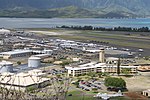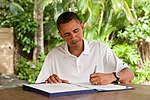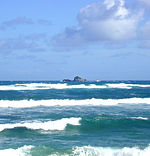Azura (wave power device)

Azura is a wave power device currently being tested in Hawaii. It is connected to the municipal grid providing electricity to Hawaii. According to the United States Department of Energy, this is the first time that a wave power generator has been officially verified to be supplying energy to a power grid in North America. This has been verified by the University of Hawaii. The device can generate 20 kilowatts of power.The device is at the Marine Corps Base Hawaii's Wave Energy Test Site (WETS) on the north shore of Kaneohe Bay, Oahu. It is situated on the surface of a 30-meter-deep berth where it is being monitored.This prototype (TRL 5/6) was developed by Northwest Energy Innovations (NWEI) with the support of the U.S. Navy, the United States Department of Energy, and the University of Hawaii. It would be in operation for a 1-year period of assessment. During that time, the University of Hawaii would be responsible for the collection and analysis of data.Azura was originally named "WET-NZ" from "Wave Energy Technology-New Zealand".
Excerpt from the Wikipedia article Azura (wave power device) (License: CC BY-SA 3.0, Authors, Images).Azura (wave power device)
Geographical coordinates (GPS) Address Nearby Places Show on map
Geographical coordinates (GPS)
| Latitude | Longitude |
|---|---|
| N 21.46488 ° | E -157.751524 ° |
Address
Honolulu County
Hawaii, United States
Open on Google Maps








